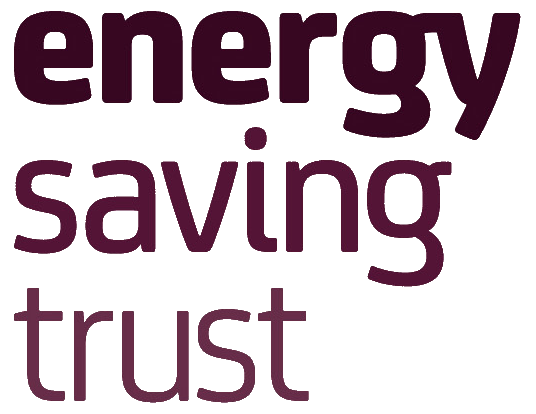Improving the effectiveness of energy efficiency schemes
In a highly ambitious project, the Energy Saving Trust used Esri GIS technology to consolidate and analyse data on all 27 million homes in the UK. It gained a unique understanding of the energy efficiency status of every individual address and is now using this insight to help governments and commercial organisations implement energy saving schemes at more properties, more cost effectively than before.
The Customer
Passionate about improving energy efficiency in the UK, the Energy Saving Trust advises individuals and households on the best ways to reduce energy bills, conserve water and minimise carbon emissions. It also works with government, local authorities and commercial organisations to help them improve the effectiveness of their sustainable energy programmes.
The Energy Saving Trust integrated GIS with its existing IBM Cognos BI system to identify properties most likely to benefit from green energy initiatives
Local councils, energy companies and commercial organisations can now reduce their marketing costs and improve the success of their schemes, by targeting only qualifying properties
Local authorities in Scotland use the GIS portal to identify homes potentially affected by fuel poverty and put measures in place to alleviate suffering
The Challenge
Across the UK there are in excess of 27 million homes, a large proportion of which were built long before the availability of modern insulation materials, efficient heating appliances and domestic energy generation systems. If the owners of these properties were to retrofit loft or cavity insulation, upgrade their boilers or install solar panels, for example, they could not only lower their energy bills, but also reduce carbon emissions, benefitting the environment as a whole.
Many different organisations – from central government and local authorities to energy suppliers – are actively engaged in promoting energy efficiency measures to home owners. However, the Energy Saving Trust observed that these energy campaigns were rarely informed by an accurate understanding of the types of homes prevalent in specific locations and the best measures to install in each home. Consequently, information about solar panels was frequently mass marketed to all homes in an area, rather than to selected homes with south facing roofs, for example.
This problem stemmed from two specific challenges: firstly there was no single database of accurate home data, covering all of the UK; and secondly the limited amount of data that was available was not easily accessible to the people on the ground, who were implementing energy saving programmes. “Decisions frequently weren’t based on evidence, which can lead to the inefficient delivery of programmes, increased costs and, in some cases, unwarranted hassle for consumers,” comments Will Rivers, data insight manager at the Energy Saving Trust.
In some cases, as much as two thirds of the cost of delivering an energy efficiency scheme can be attributed to identifying and locating the right types of home. By reducing this cost of delivery, we can help organisations to deliver more energy saving measures into the UK housing stock in a more cost effective way
Will Rivers – data insight manager at the Energy Saving Trust
The Solution
The Energy Saving Trust set about consolidating data on every home in the UK, including property type, size, age, wall construction, loft insulation, glazing, tenure and the sociodemographic profile of the householder. Then, the organisation used geographic information system (GIS) technology from Esri UK to work out the likely roof orientation of each property and its suitability for solar panels; measure the distance of each home from mains gas and supplies of biomass fuel; and analyse the potential for wind-energy. Through this sophisticated use of GIS, the Energy Saving Trust gained valuable knowledge about every single home in the UK and successfully built up a comprehensive database with energy-related data never captured before.
“Esri technology in combination with Ordnance Survey data has enabled us to target the installation of a number of sustainable energy technologies in a far more accurate way so that we can work to increase take up of these measures,” Rivers says.
In addition, the Energy Saving Trust engaged Esri UK’s partner Assimil8 to integrate GIS into its existing IBM business intelligence system using Esri Maps for IBM Cognos. With this GIS portal, called Home Analytics, the organisation and its many partners can now perform complex searches to find, for example, houses over a certain age, in a specific city, with unfilled walls and occupants on low income, to identify precisely those households that might qualify for funding for insulation. They can generate displays on a digital map, make selections and export a report with a list of just those qualifying addresses.
Esri technology in combination with Ordnance Survey data has enabled us to target the installation of a number of sustainable energy technologies in a far more accurate way so that we can work to increase take up of these measures
Will Rivers – data insight manager at the Energy Saving Trust
The Benefits
The Energy Saving Trust’s Home Analytics solution enables organisations to target the right homes and the right people with the most appropriate energy efficiency schemes. It is therefore playing a crucial role in the UK, helping to drive the adoption of measures to reduce energy consumption, minimise carbon emissions and alleviate fuel poverty.
Local authorities use Home Analytics to help them reduce the cost of implementing energy efficiency initiatives and improve their ability to meet government targets. Rather than knocking on every door in a neighbourhood or mailshotting an entire city, councils can focus their resources on precisely those homes that meet the criteria. “In some cases, as much as two thirds of the cost of delivering an energy efficiency scheme can be attributed to identifying and locating the right types of home,” Rivers explains. “By reducing this cost of delivery, we can help organisations to deliver more energy saving measures into the UK housing stock in a more cost effective way.”
Commercial companies, like solar panel providers, can also take advantage of Home Analytics to improve their sales success and install more solar panels – both improving their revenues and helping to reduce the country’s overall carbon emissions. Equally, the UK’s large energy suppliers can use the solution to target those households where they can achieve the biggest reduction in carbon for the least cost. “If we can help energy companies deliver their energy obligations more cheaply, we can make their investment go further and improve the success of government policies like the Green Deal,” Rivers says.
Millions of people across the UK are affected by fuel poverty, and Home Analytics can be used to help to alleviate this suffering. Local authorities in Scotland currently use this GIS portal to pinpoint those homes in specific locations, occupied by people over 75 or under 5 years old, with high energy bills and low incomes and no cavity wall insulation for example. “Fuel bills have more than doubled since 2005,” says Rivers. “Home Analytics helps local authorities identify people who are at most risk and provide targeted support.”



